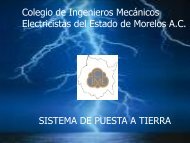deva.metal Handbuch EN für GGB - Supresores
deva.metal Handbuch EN für GGB - Supresores
deva.metal Handbuch EN für GGB - Supresores
Create successful ePaper yourself
Turn your PDF publications into a flip-book with our unique Google optimized e-Paper software.
<strong>deva</strong>.<strong>metal</strong> ®<br />
maintenance-free<br />
1<br />
Material properties<br />
<strong>deva</strong>.<strong>metal</strong> ® is a family of high performance, self-lubricating<br />
bearing materials. The <strong>deva</strong>.<strong>metal</strong> ® system is<br />
based on four main groups – bronze, iron, nickel and<br />
stainless steel – each containing dry solid lubricant,<br />
most commonly graphite, uniformly dispersed within<br />
the <strong>metal</strong> matrix.<br />
Important selection criteria are the sliding speed,<br />
specific load, temperature and other applicationspecific<br />
influences.<br />
<strong>deva</strong>.<strong>metal</strong> ®<br />
• normally requires no lubrication.<br />
• provides maintenance free operation.<br />
• has high static and dynamic load capacity.<br />
• has good frictional properties with negligible<br />
stick-slip.<br />
• can be used in dusty environments.<br />
• can be used dependent on alloy in a temperature<br />
range of -200 °C to +800 °C.<br />
• grades may be selected to tolerate corrosive<br />
applications.<br />
• has no water absorption and is therefore dimensionally<br />
stable, suitable for use in sea water and many<br />
commercial liquids.<br />
• alloys are available for use in radioactive environments.<br />
• is electrically conductive. No signs of electrostatic<br />
charging occur.<br />
• is suitable for translatory, rotational and oscillating<br />
movements with cylindrical guide or also for direct<br />
surface use. These movements can occur individually<br />
or in combination.<br />
• is used where conventional lubrication is not possible.<br />
• offers advantages for low-cost lubrication in comparison<br />
to conventional bearing materials.<br />
• can be used as back-up bearing for hydrodynamic<br />
lubrication.<br />
• can be used with hydrodynamic water lubrication.<br />
Material<br />
properties<br />
Material<br />
structure<br />
2<br />
Material structure<br />
2.1<br />
Alloys<br />
All <strong>deva</strong>.<strong>metal</strong> ® alloys share a common <strong>metal</strong>lurgical<br />
microstructure of a solid lubricant uniformly distributed<br />
throughout a <strong>metal</strong> matrix.<br />
The properties of the <strong>metal</strong> matrix determine the general<br />
physical, mechanical and chemical properties of the<br />
material and are the basis on which an initial alloy<br />
selection is made for a specific application.<br />
A selection of four main groups is available: bronze base,<br />
iron base, nickel base and stainless-steel base.<br />
5




